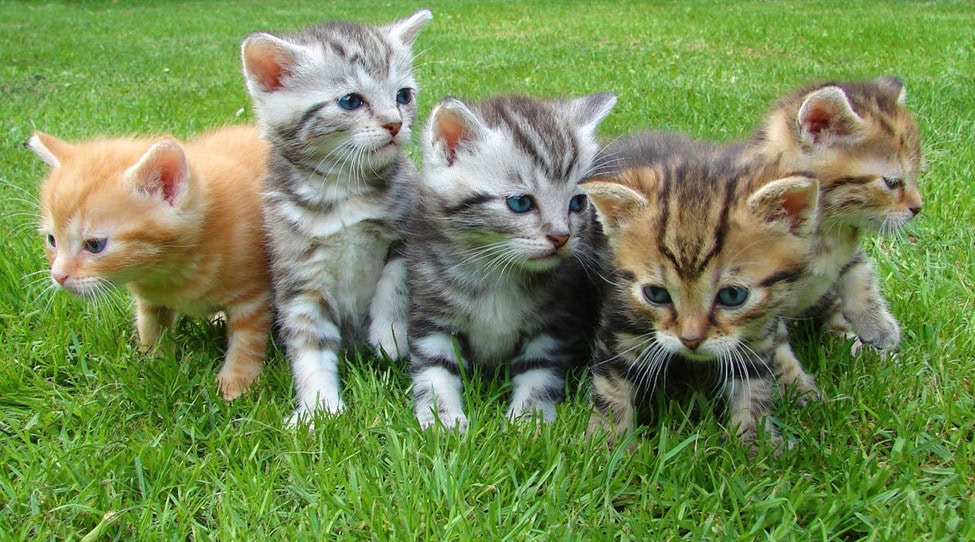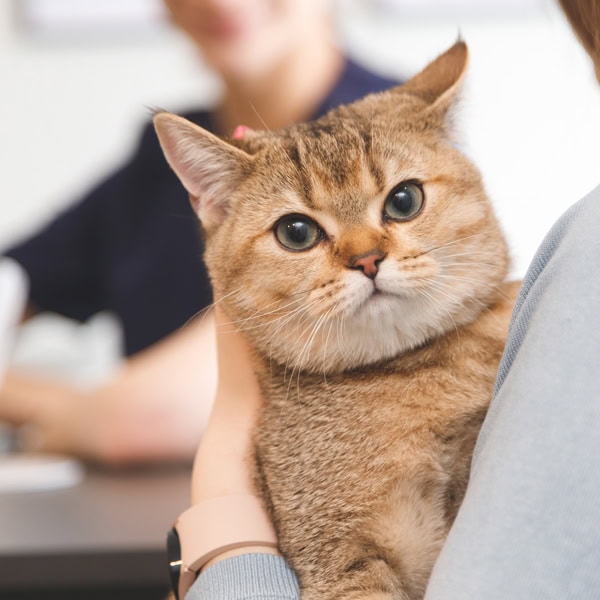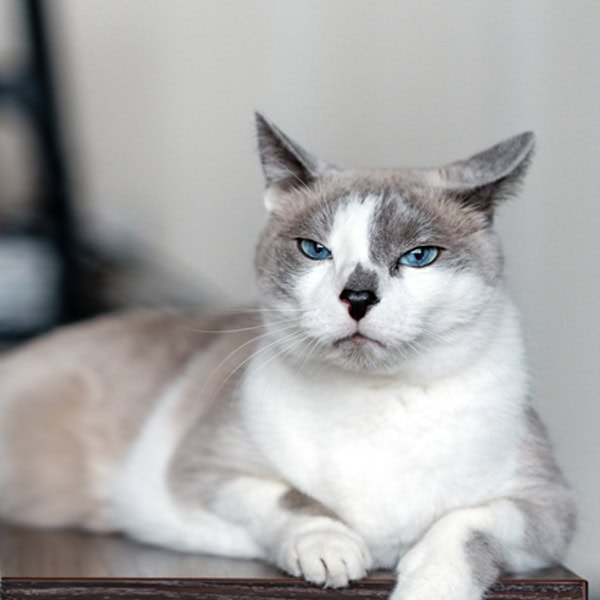What would you do if your beloved cat suddenly became sick, lost weight, or showed unusual behavior? These situations are every cat owner’s nightmare. Understanding common cat diseases and how to prevent them can help you avoid these issues. This article covers the top 10 common cat diseases, explaining their symptoms and giving you practical prevention tips. By staying informed about these diseases, you can take steps to keep your cat healthy and happy.

Table of Contents
Toggle1. Feline Leukemia Virus (FeLV)
Feline Leukemia Virus (FeLV) is a serious viral infection that attacks a cat’s immune system, leaving them vulnerable to a range of other infections and certain types of cancer. This virus spreads easily among cats, particularly those that roam outside or interact frequently with other felines. FeLV can significantly impact a cat’s health and longevity, making it crucial for cat owners to understand and address this disease early.
Symptoms:
- Weight Loss: Cats with FeLV often lose weight despite having a normal appetite.
- Persistent Fever: A recurring or chronic fever is a common sign.
- Pale Gums: The gums may appear pale or yellowish.
- Gum Inflammation: Inflammation of the gums and mouth is frequent.
- Diarrhea: Cats may experience chronic diarrhea.
- Eye Conditions: Some cats develop eye infections or inflammation.
Prevention:
- Vaccination: Ensure your cat receives the FeLV vaccine, especially if they go outdoors or interact with other cats.
- Regular Vet Visits: Schedule routine check-ups to monitor for early signs of FeLV.
- Avoid Contact: Keep your cat indoors or supervise outdoor time to prevent exposure to infected cats.
2. Feline Immunodeficiency Virus (FIV)
Feline Immunodeficiency Virus (FIV) is an immunodeficiency disease that weakens a cat’s immune system, much like HIV does in humans. This leaves affected cats more susceptible to other infections and health issues. FIV is typically spread through bite wounds, making it more common in unneutered male cats that fight with other cats. Understanding and managing FIV is essential for keeping infected cats as healthy as possible.
Symptoms:
- Weight Loss: A steady decline in weight is a frequent sign.
- Persistent Fever: Cats with FIV often have a recurring fever.
- Loss of Appetite: You might notice a noticeable drop in your cat’s appetite.
- Diarrhea: Frequent diarrhea may occur.
- Gingivitis: Inflammation of the gums and mouth is common.
- Eye Problems: Some cats develop eye infections or other issues.
Prevention:
- Testing: Have your cat tested for FIV, especially if they show symptoms or have been exposed to other cats.
- Neutering: Reduce the risk of fights, which can spread FIV.
- Indoors: Keep your cat indoors to limit their exposure to FIV-positive cats.
3. Feline Infectious Peritonitis (FIP)
Feline Infectious Peritonitis (FIP) is a severe and frequently deadly condition that arises from a mutation of the feline coronavirus. This virus initially infects the gastrointestinal tract but can mutate and spread throughout the body, causing severe complications. FIP is challenging to diagnose and treat, and its severity makes it one of the more concerning diseases for cat owners.
Symptoms:
- Fever: A persistent, high fever is often observed.
- Weight Loss: Significant weight loss can occur rapidly.
- Abdominal Swelling: Fluid accumulation in the abdomen can cause swelling.
- Lethargy: Cats with FIP often show extreme tiredness and lack of energy.
- Respiratory Issues: Breathing problems and coughing may develop.
Prevention:
- Clean Environment: Keep your cat’s environment spotless to minimize the chance of coronavirus exposure.
- Monitor Health: Regular veterinary check-ups can help detect early signs.
- Isolation: Keep infected cats separated from healthy ones to prevent the spread of the virus.
4. Feline Panleukopenia (FPV)
This disease, driven by the feline parvovirus (FPV), targets the gastrointestinal system, bone marrow, and lymphatic tissues, resulting in severe and frequently life-threatening symptoms. Notably, FPV is exceptionally resilient, able to endure in the environment for extended periods despite many disinfectants, which underscores the critical need for vigilance and prevention.
Symptoms:
- Vomiting: Frequent vomiting is a common symptom.
- Diarrhea: Cats with FPV often experience severe diarrhea.
- Dehydration: Dehydration from vomiting and diarrhea can be significant.
- Fever: A high fever is often present.
- Lethargy: Cats may appear weak and uninterested in their surroundings.
Prevention:
- Vaccination: Ensure kittens receive the FPV vaccine and maintain booster shots for adults.
- Hygiene: Keep your cat’s environment clean to reduce the risk of infection.
- Quarantine: Isolate any infected cats to prevent the spread of the virus to other cats.
5. Upper Respiratory Infections (URI)
Upper respiratory infections (URI) in cats, commonly triggered by viruses like feline herpesvirus and calicivirus, impact the nasal passages, throat, and sinuses. These infections produce symptoms akin to a human cold, such as sneezing and nasal discharge. URIs spread easily among cats, particularly in settings with many felines, such as shelters or homes with multiple cats.
Symptoms:
- Sneezing: Frequent sneezing is a common symptom.
- Nasal Discharge: Cats may have a runny nose with clear or colored discharge.
- Eye Discharge: Watery or mucus-filled discharge from the eyes is typical.
- Coughing: Some cats may develop a persistent cough.
- Fever: A mild to moderate fever can occur.
Prevention:
- Vaccination: Ensure your cat is vaccinated against the viruses causing URI.
- Reduce Stress: Minimize stress to help keep the immune system strong.
- Quarantine: Isolate sick cats from healthy ones to prevent the spread of the infection.
6. Kidney Disease
Kidney disease, or renal failure, is a frequent issue in cats that tends to increase with age. This condition entails a gradual decline in kidney function, causing a harmful accumulation of toxins in the body. Chronic kidney disease can greatly affect a cat’s well-being and demands continuous care to maintain kidney health and improve their quality of life.
Symptoms:
- Increased Thirst: Your cat might start drinking more water than normal.
- Frequent Urination: Increased urination is often observed.
- Weight Loss: Cats with kidney disease might shed pounds even though their appetite remains unchanged.
- Poor Coat Condition: Their fur may become dull and unkempt.
- Lethargy: Cats may appear tired and less active.
Prevention:
- Diet: Feed a diet formulated for kidney health to support kidney function.
- Hydration: Make sure your cat always has a fresh supply of water available.
- Regular Check-ups: Routine veterinary visits can help catch early signs of kidney disease.
7. Diabetes Mellitus
Diabetes Mellitus in cats occurs when their body struggles to produce or utilize insulin effectively, resulting in elevated blood sugar levels. This condition is particularly prevalent in older and overweight cats. Proper management includes controlling their diet, regularly checking blood sugar levels, and occasionally giving insulin injections to maintain their health.
Symptoms:
- Increased Thirst: Cats with diabetes drink more water than usual.
- Frequent Urination: Excessive urination is a common sign.
- Weight Loss: Cats may lose weight despite having a good appetite.
- Increased Appetite: A noticeable increase in hunger can occur.
- Lethargy: Reduced energy and increased tiredness are typical.
Prevention:
- Healthy Diet: Feed a balanced diet and control portion sizes.
- Weight Management: Keep your cat at a healthy weight through diet and exercise.
- Regular Monitoring: Check for early signs, especially in older or overweight cats.
8. Hyperthyroidism
Hyperthyroidism is a common endocrine condition in senior cats, where the thyroid gland overproduces hormones, speeding up metabolism and causing health complications. Without proper treatment, this imbalance can escalate into serious issues like heart disease or elevated blood pressure.
Symptoms:
- Weight Loss: Despite a good appetite, cats may lose weight.
- Increased Appetite: An unusually high appetite is common.
- Hyperactivity: Cats may become excessively active and restless.
- Vomiting: Frequent vomiting can occur.
- Increased Thirst and Urination: Cats may drink and urinate more than usual.
Prevention:
- Regular Vet Visits: Routine blood tests to monitor thyroid levels are essential.
- Medication: Early intervention with prescribed medication can manage symptoms.
- Balanced Diet: Feed a diet that supports overall thyroid health.
9. Feline Lower Urinary Tract Disease (FLUTD)
This condition can arise from urinary tract infections, bladder stones, or other underlying health concerns.
Symptoms:
- Straining to Urinate: Cats may struggle or cry out while trying to urinate.
- Frequent Attempts: Increased attempts to urinate are common.
- Blood in Urine: You might see traces of blood in your cat’s urine.
- Painful Urination: Cats may show signs of pain or discomfort.
- Licking the Genital Area: Excessive licking of the genital area is a sign.
Prevention:
- Hydration: Ensure your cat has access to plenty of water.
- Diet: Feed a diet that supports urinary tract health and prevents crystals.
- Stress Reduction: Minimize stress, which can trigger FLUTD symptoms.
10. Obesity
It’s often caused by overfeeding and lack of physical activity. Managing a cat’s weight through diet and exercise is crucial for preventing obesity-related health issues.
Symptoms:
- Excessive Body Weight: Cats with obesity have noticeable weight gain.
- Difficulty Moving: They may have trouble moving around comfortably.
- Lethargy: Increased tiredness and reduced activity levels.
- Difficulty Breathing: Obesity can lead to respiratory issues.
- Poor Coat Condition: Their fur may appear less healthy.
Prevention:
- Balanced Diet: Provide a well-balanced diet with proper portion control.
- Regular Exercise: Engage your cat in regular play and physical activity.
- Routine Monitoring: Regularly check your cat’s weight and adjust their diet accordingly.
FAQs
Q1: What is feline calicivirus and how can it affect my cat?
A1: Feline calicivirus is a highly contagious virus that causes respiratory infections in cats, including symptoms like sneezing, nasal discharge, and mouth ulcers. Prevention includes vaccination and maintaining good hygiene.
Q2: What are the symptoms of feline hyperthyroidism and how is it managed?
A2: Symptoms of feline hyperthyroidism include weight loss, increased appetite, and hyperactivity. It is typically managed with medication, special diets, or, in some cases, surgery. Regular vet check-ups are essential for monitoring and managing this condition.
Q3: How can I prevent my cat from developing urinary tract infections (UTIs)?
A3: Keep the litter box clean and create a low-stress environment, as these steps can significantly reduce the risk of urinary problems. If symptoms persist, consult your vet for appropriate treatment.
Conclusion:
In this article, we’ve explored the top 10 common cat diseases and how to prevent them, highlighting the key symptoms and effective prevention strategies. Understanding these common cat diseases and their prevention can significantly improve your cat’s health and quality of life. By being proactive with vaccinations, maintaining a clean environment, and providing proper nutrition, you can help safeguard your feline friend from these serious conditions. Keeping informed about common cat diseases and how to prevent them is essential for ensuring your cat stays healthy, happy, and thriving.




